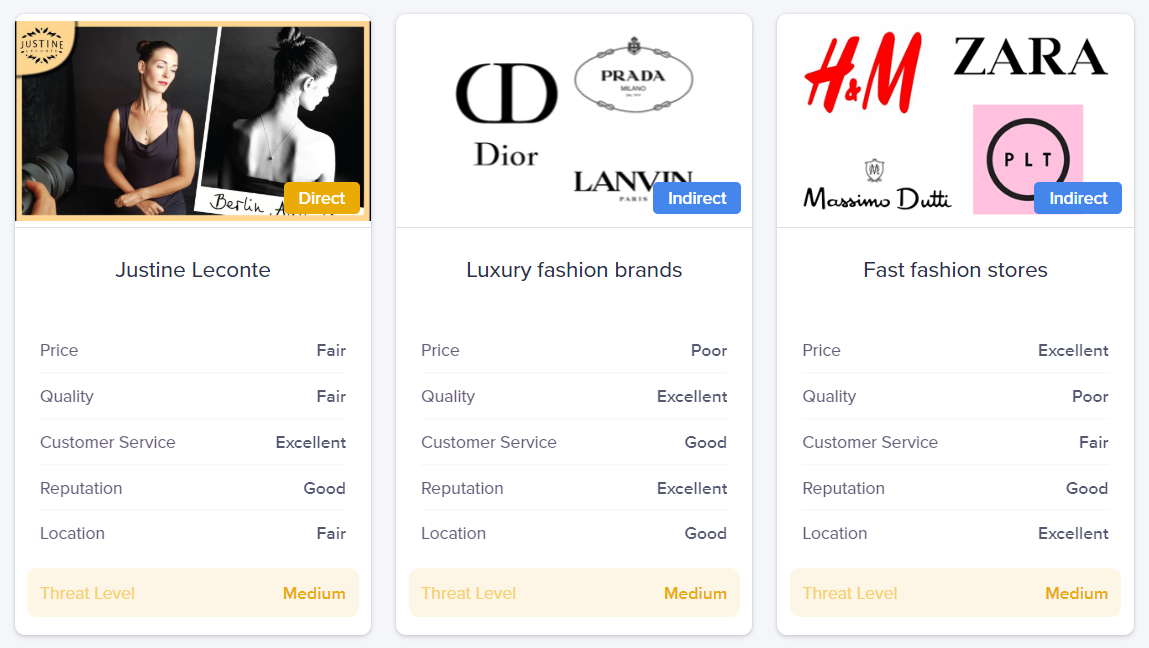Have you invested heavily in your new business idea only to discover that you might be selling ice to Eskimos? Or maybe you’re advertising health products to Joe Sixpack who just wants… well, a six-pack of cold ones?
Either way, in case you are starting your business or launching a new product, you probably know how hard it is to identify and find your target audience.
That’s why we’ll explain how to get a better understanding of your customers’ needs and wants, and that can help you to turn your business into a roaring success.
Read on to learn:
- What a target audience is
- Why it’s important to know
- How to find the target audience
- How to tailor your offers to them
What is the target audience?
The customer always comes first. So the saying goes. Without anyone to buy your products and services, your business idea is just that… an idea.
So who will buy from you? Your target audience.
They are the people who are most likely to benefit from what you have to offer, and it’s crucial that you learn as much about them as possible. The more you know, the more you’ll sell.

Finding your target market will help you do the following:
- Improve your unique selling proposition
- Allocate your resources more efficiently
- Get the most out of your marketing budget
- Maximize your return on investment
It’s hard to deny the importance of target audience marketing. So let’s look at how you identify who those people are.
How to find your target audience?
It’s not always straightforward to define your ideal customer. You may have a rough idea of who they are, but the devil is in the details. That’s why we’ve put together a step-by-step guide on how to come up with the perfect buyer personas.
Identify your differentiators
Unless you’re in the early planning stages of your business, then you’ll have a clear idea of the product or service you have to offer. That’s a great starting point.
But as enthusiastic as you may be about your own idea, the benefits of it will not always be obvious to the customers you want to reach. That’s why it’s important to outline the exact benefits they will enjoy if they go with you.
Here are some questions to ask yourself:
- What market problem do you solve?
- What is your unique selling proposition (USP)?
- How are your products or services different than your competitors?
Look at your current customers (if you have any)
Already in business? Good. That means you have valuable data to analyze.
Here are some questions to ask yourself:
- Who are the people buying from you?
- What do they have in common?
- What are their reasons for buying from you?
You should always start with the facts you already know.
Research the competition
Unless you’ve found a very narrow niche, chances are you have some competition. And although that can be a thorn in your side, it can also be a great opportunity to gain further insights.
If your competition is more established than you, then you can look at what they’re doing right — and what they’re doing wrong.
Here are more questions to ask yourself:
- Who do they target?
- How do they promote their offer?
- Who uses their products

Conduct market research
Once you’ve looked at your existing customers and your competition, it’s time to look at the market as a whole.
There might be people neither you nor your competitors have managed to reach yet. Or there might be new and betters ways to engage with the customer you already know love your product.
Here are some ways you can conduct market research:
- Send out surveys
- Hold one-to-one interviews
- Organize focus groups
- Look at statistical data
There are plenty of ways to get more informed about your market, you just need to be creative.
Analyze customer data
At this point, you should have a general idea of your target customers. Now it’s time to narrow it down and look at the granular details. There is no such thing as TMI here, so make sure you gather as much information about them as possible.
Here are some ways you can segment your target market:
- Demographic factors – These include age, gender, education, income, and profession.
- Behavioral patterns – Such as hobbies, shopping habits, and technological proficiency.
- Desires and pain points – That could be goals to achieve or problems to solve.
Behavioral patterns will often be more useful to look at because they help you map out the customer journey.
Create a buyer persona
With all the data in hand, you’re able to craft one or more buyer personas. A buyer persona is essentially an avatar or a representation of the typical customer you’re trying to reach.
It’s the person you should think of every time you write an email, a blog post, an advertisement, or any other marketing collateral.
Here’s a target customer profile example to give you an idea:
John Doe
- Male
- 35 years old
- Master’s degree
- Senior IT professional
- Married with kids
- Earns $100,000 a year
- Loves traveling
- Uses Facebook and LinkedIn
- Wants to start his own company
- Fears financial instability
Every time you put together target marketing strategies, ask yourself what John Doe would think of it. Does your copy reflect his tone of voice? Do you speak to his hopes and fears?
John Doe is not the only user persona you should create.

He has friends as well. They’re not as well off as he is, and they may not be able to afford to buy your product. But they have the same interests as John, and he trusts their advice.
They’re the “second customer” or “promoters-brand ambassador.”
They’re people who won’t buy from you but will recommend you to the person who will buy from you. The screenshot below shows you how IdeaBuddy makes it easy to create buyer personas.
How to create tailor-made offers?
You should now know exactly how to find your target audience and you also know what they want. Now it’s time to put together an irresistible offer that speaks to their wants and fears. You can do that by following the three steps below.
Validate if you have product-market fit
You’ve used your product as a starting point and looked at your current customers, your competition, and the market. You’ve also identified the main pain points of your target audience.
Now you need to check if your product actually solves your target audience’s problem. And not only that, you need to see is your USP really as unique as you thought it was.
The best way to do that is to test.
If you have a prototype of your product, then send it out and ask for feedback. Find people who match your buyer persona(s) and ask them to try it. You want as much constructive criticism as possible so you avoid learning the hard way at the later stages.
If your product is well-received, then you have a product-market fit. If not, you should revise it based on the feedback you’ve received. Then rinse and repeat.
Improve customer experience
Once you know that your product or service works, it’s time to look at the customer journey.
How does your target audience discover your business? What will they do after they discover it? What are the exact steps that lead them from being a stranger to becoming a loyal customer?
You can improve the customer experience by making sure that each step of the journey provides value to your target customers and speaks to their desires.
Bear in mind that the customer journey doesn’t stop when you make a sale.
How well your product and service works in practice is also part of the journey. If your product or service doesn’t work, then the customer experience is ruined. And then you will quickly rack up a bad reputation online.
Adjust your message and tone
People don’t buy products, people buy people. Or so the saying goes. We buy from people we trust, and we trust people that we can relate to. So for you to connect with your target audience, you need to speak the same language as them.
Do John Doe and his friends use certain terminology that only IT professionals use? Are there inside jokes you should be aware of? How can you incorporate them into your marketing campaign? And how can you do it in a natural way that doesn’t come across as a corporate brand trying to be cool with the kids?
Another thing to consider is audience segmentation.
If you have more user personas than just John Doe, then you should tailor your approach to suit each of them. Maybe your business also appeals to a younger or older demographic. They’ll use different social media and speak a different language.
That’s why it’s useful to create target audience categories.
Finally, there is the “second buyer” persona to account for. Although they’re not your main bread and butter, they’ll be effective brand ambassadors for you. Invest in marketing to them, and they’ll provide you with free marketing in return.
What are their behavioral patterns? Which social media platforms do they use? Make sure you adjust your message to match the target market segmentation.
. . .
Key Takeaways to Take Action On
Here is a summary of all nine action items that will help you find the target audience and create tailor-made offers for them:
#1 Find out what makes your products and services unique
#2 Look at your existing customers for clues
#3 Check who your competitors are targeting
#4 Conduct market research
#5 Analyze the customer data
#6 Create your buyer personas
#7 Check if you have an ideal product-market fit
#8 Improve customer experience according to your user personas
#9 Adjust your message to match the audience
Now you have all the tools you need, so you just need to take action.
Good luck!



